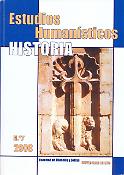3C@CTDI - Colaboração, contribuição e comunidade em CTDI
DOI:
https://doi.org/10.18002/ehh.v0i7.3121Keywords:
Enseñanza distribuida, Ambientes de aprendizaje colaborativos, e/b-learning, Web 2.0, Sistemas de gestión de contenidos, Producción científica, Blogs, Wikis, Tagging, Social bookmarking, Social Networking, Distributed teaching, Collaborative learning.Abstract
Los profesores de la licenciatura en Ciências e Tecnologias da Documentação e Informação (CTDI) se preparan para sacar partido de las herramientas Web 2.0 como un complemento de su actividad lectiva. En este contexto, se presenta el Grupo de Investigación PIGeCo que pretende, por un lado, implementar la utilización de herramientas Web 2.0 de tal forma que se pueda conseguir ciertas premisas que actualmente orientan la nueva generación web (colaboración, contribución, comunidad), aplicandolasà la actividad lectiva e, por otro lado, el estímulo de la producción científica de los profesores y académica de los alumnos, así como su posterior análisis. Se ha hecho una valoración de los proyectos en curso y se discuten las expectativas esperadas presentado un análisis de las perspectivas y ambiciones futuras del grupo.
Teachers of the Ciências e Tecnologias da Documentação e Informação (CTDI) degree are preparing to take advantage of web 2.0 tools, using them as a complement of their activity. PIGeCo, a research group recently created, is presented as a way to implement the web 2.0 tools, so that these teachers can reach the premises that nowadays rule the new web generation (collaboration, contribution, community), applying them to their teaching activity. They also intend to stimulate teacher’s scientific production and student’s academic work. A state of the art of PIGeCo´s projects is presented and expectations are discussed.The group also presents their perspectives and future ambitions.
Downloads
References
BAYRAM, Özlem ; ATILGAN, Doğan ; ARSLANTEKIN, Sacit (2006). “An Institutional Repository Initiative and Issues Concerning Metadata”. En Guerrero-Bote, Vicente P., Eds. Proceedings I International Conference on Multidisciplinary Information Sciences And Technologies 1. Merida (Spain), InScit2006.
BERRY, Milles (2006) Knowledge management in education and the contribution of Virtual Learning Environments. Computer Education 112, Spring 2006. Disponible en WWW: http://elgg.net/mberry/files/-1/4939/Knowledge%20Management.pdf> e URL:http://elgg.net/mberry/weblog/11076.html
INSTITUTO POLITÉCNICO DO PORTO (2004). Anuário Científico. Porto : IPP.
LEYESDORFF, L. (1995). The challenge of Scientometrics: the development, measurement and self-organization of scientific communications. Netherlands: DSWO Press.
MALHOTRA, Y., GALLETTA, D. F. (2004). Building Systems That Users Want To Use. Communications of the ACM December 2004/Vol. 47, No. 12. Disponível em WWW: http://www.kmnetwork.com/ITUseCACM.pdf>
MALTRAS BARBA, B. (2003). Los indicadores bibliometricos: fundamentos y aplicación al analisis de la ciencia. Gijon : Trea.
MARTINS, S.; OLIVEIRA, L.; CARVALHO, M.; SILVA, C. (2006). Observatório de Investigação e Desenvolvimento - ESEIG, Proposta de Projecto. Vila do Conde.
MILAM, J. H., Jr. Knowledge Management for Higher Education. ERIC Digest. Disponível em WWW: http://www.ericdigests.org/2003-1/higher.htm>
MILLER, P. - Web 2.0: Building the New Library. Ariadne Issue 45. Disponível em WWW: http://www.ariadne.ac.uk/issue45/miller>
MILLER, P. (2007). What is Web 2.0? Ideas, Technologies and Implications for Education. JISC Technology and Standards Watch, Fevereiro 2007. Disponível em WWW: http://www.jisc.ac.uk/media/documents/techwatch/tsw0701b.pdf>
OCDE (2003). Manual de Frascati: medicion de las actividades cientificas e tecnologicas : propuesta de norma pratica para encuestas de investigación y desarrollo experimental. Madrid: FECYT.
O'REILLY, T.. What Is Web 2.0 - Design Patterns and Business Models for the Next Generation of Software. O'Reilly Network. Disponível em WWW: http://www.oreillynet.com/pub/a/oreilly/tim/news/2005/09/30/what-is-web20.html>
SILVA, C.; OLIVEIRA, L.; CARVALHO, M.; MARTINS, S. (2006). Plataforma Integrada de Gestão de Conteúdos – CTDI, Proposta de Projecto. Vila do Conde.
STUMPF, I. R. (1996). Passado e futuro das revistas científicas. In Ciência da Informação. Vol. 25, n.º 3, 1996. Disponível em http://www.ibict.br/ cionline/include/ getdoc.php?id=846&article=504&mode=pdf>. Consultado em 26 de Junho 2005.
THE NEW MEDIA CONSORTIUM and EDUCASE LEARNING INICIATIVE (2007). The Horizon Report 2007 Edition. California, 2007. ISBN 0-975087-4-5. Disponível em WWW: http://www.nmc.org/pdf/2007_Horizon_Report.pdf>
TRAMULLAS, J. (2005). Software libre para gestión de recursos de información digital. En Actas del Encuentro Internacional sobre Conocimiento Libre - II Conferencia Internacional de Software Libre. Mérida.
UBON, A. Na; KIMBLEM, Ch. (2002). Knowledge Management in Online Distance Education. Networked Learning 2002. Disponível em WWW: http://www.cs.york.ac.uk/mis/docs/km_in_olde.pdf>
VAZ DE CARVALHO, C. (org) (2006). e-learning e formação avançada – Casos de sucesso no Ensino Superior da Europa e América Latina. Edições Politema. Colecção Estudos.
Downloads
Published
How to Cite
Issue
Section
License
Copyright (c) 2009 Cândida Silva, Lino Oliveira, Milena Carvalho, Susana Martins

This work is licensed under a Creative Commons Attribution-NonCommercial-ShareAlike 4.0 International License.
Los autores que publican en esta revista están de acuerdo con los siguientes términos:
1.- Los autores ceden de forma no exclusiva los derechos de explotación (reproducción, distribución, comunicación pública, transformación) a la Universidad de León, por lo que pueden establecer, por separado, acuerdos adicionales para la distribución no exclusiva de la versión de la obra publicada en la revista (por ejemplo, alojarlo en un repositorio institucional o publicarlo en un libro), con un reconocimiento de su publicación inicial en esta revista.
2.- Este trabajo se encuentra bajo la Creative Commons Attribution-NonCommercial-ShareAlike 4.0 International License. Puede consultarse desde aquí la versión informativa y el texto legal de la licencia.
3.- Se permite y se anima a los autores a difundir electrónicamente las versiones pre-print (versión antes de ser evaluada) y/o post-print (versión evaluada y aceptada para su publicación) de sus obras antes de su publicación, ya que favorece su circulación y difusión más temprana y con ello un posible aumento en su citación y alcance entre la comunidad académica.








